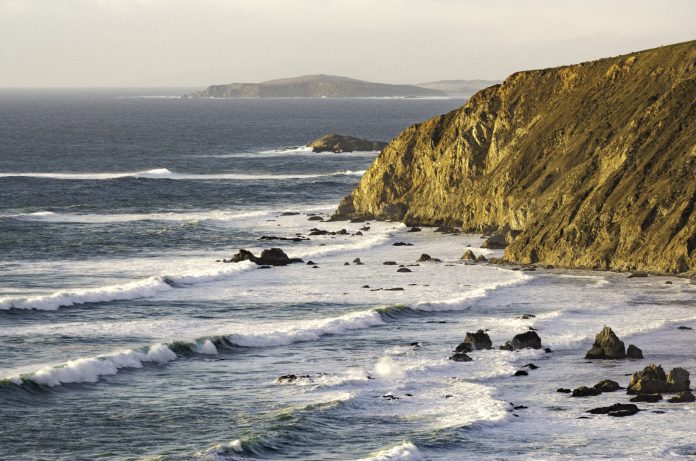It is said that nothing can be all things to all people, but every rule has an exception. Point Reyes National Seashore is the exception to this rule. Jutting boldly into the Pacific Ocean in western Marin County, Point Reyes and its surrounding communities have something that will excite and please everyone.
Often, when I try to lure an unsuspecting friend into an outdoor adventure, like an unscrupulous used car salesman, I omit what they might consider to be important information. I know that the place I want them to see will astonish them. So, in order to get them to come, I leave things out. Things like: it’s a ten-mile hike over a high pass; we have to stay at a flea-bitten flop house in a town that has nothing but a gas station and a dive bar. Some people don’t like that.
When I sing the praises of Point Reyes, full disclosure is not a problem. Dining and lodging in the area run the gamut, from basic to hoochy-coochy, and the park has an amazing variety of landscapes, all of which you can reach on a short walk, a long hike, or out the car window.
Draw a line trending northwest from Bolinas Lagoon through the middle of Tomales Bay. Nearly all of the land west of that line—100 square miles of coastal wilderness and 80 miles of powerful wild shoreline—comprises Point Reyes National Seashore. The park’s variety of habitats is incredible. There are reaches of sand dunes so vast that one could film a sequel to “Lawrence of Arabia.” The stands of Douglas fir and bishop pine that cloak Inverness Ridge are virtual rain forests. At Chimney Rock or at Point Reyes Lighthouse, massive cliffs plunge into a rolling sea. At Limantour Beach you can walk forever on a spit of sand at the mouth of Drakes Estero. In the northern section of the park, where a rich history of dairy farming has been preserved, miles of pasture land roll endlessly over coastal bluffs and hollows calling to mind scenes of the Scottish Highlands.
We began our visit with a drive to the park’s farthest outpost, Point Reyes itself. On our drive there, we passed a group of about ten elegantly antlered male tule elk lounging on a hillside above Drakes Estero among the resident dairy cattle. Point Reyes is a two-tipped cape, each tip just a short distance from the car. After a ten-minute walk, we gazed down a long staircase at Point Reyes Lighthouse perched bravely since 1870 on a point that a sign there called the windiest place on the Pacific Coast.
Next, after a five-minute drive, we parked and set out on the 1.5-mile out-and-back trail to the second point of the cape, Chimney Rock—a must-do walk. Few places are such an elegant and powerful perch. On one side, we saw the Farallon Islands and the sea beyond more distinctly than I have ever seen them. On the other side, the full scope of Drakes Bay, Drakes Estero, and a wild shoreline that trails for miles southward toward Bolinas. Directly beneath, elephant seals napped on the beach.
Wait, I’m out of space, and I am just getting started. There is still the Tule Elk Preserve and McClure’s Beach up at Pierce Ranch. And Limantour Beach. And the great sandwiches at the deli at the Inverness Park Market. And a terrific dinner at Nick’s Cove in Marshall. And what about the Cowgirl Creamery and Point Reyes Books in the town of Point Reyes Station?
Point Reyes has something for everybody. No bull.
Connect with the natural world at www.RonErskine.com.










